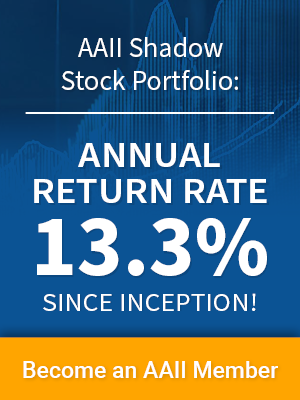Avoid the stress of overpaying for a stock or missing an opportunity by using the right tools and insights to evaluate Cadence Bank before investing.
In this article, we go over a few key elements for understanding Cadence Bank’s stock price such as:
- Cadence Bank’s current stock price and volume
- Why Cadence Bank’s stock price changed recently
- Upgrades and downgrades for CADE from analysts
- CADE’s stock price momentum as measured by its relative strength
About Cadence Bank (CADE)
Before we jump into Cadence Bank’s stock price, history, target price and what caused it to recently rise, let’s take a look at some background.
Cadence Bank provides commercial banking and financial services in the United States. It operates through Corporate Banking, Community Banking, Mortgage, and Banking Services segments. The company offers deposit products, including checking accounts, savings accounts, money market accounts, time deposits, and other deposit accounts through multiple channels It also provides commercial, consumer, industrial, and residential and commercial real estate loans. In addition, the company offers term loans, lines of credit, equipment and receivable financing, energy, restaurant, healthcare, technology, small business administration, agricultural loans, construction loans, second mortgage loans, and home equity lines of credit, as well as automobiles, recreation vehicles, boats, secured and unsecured personal, and deposit account secured loans. Further, it provides wealth management, and other fiduciary and private banking services. Additionally, the company offers trust and investment management, asset management, and retirement and savings solutions, as well as estate planning, annuity, and credit-related products. It serves individuals, businesses, governmental institutions, and non-profit entities. The company was founded in 1876 and is headquartered in Tupelo, Mississippi.
Want to learn more about Cadence Bank’s stock? Click the button below to subscribe to A+ Investor and get access to everything you need to know about Cadence Bank.

Cadence Bank’s Stock Price as of Market Close
As of November 26, 2025, 4:00 PM, CST, Cadence Bank’s stock price was $39.770.
Cadence Bank is up 0.38% from its previous closing price of $39.620.
During the last market session, Cadence Bank’s stock traded between $39.550 and $40.100. Currently, there are approximately 186.31 million shares outstanding for Cadence Bank.
Cadence Bank’s price-earnings (P/E) ratio is currently at 14.4, which is high compared to the Banks industry median of 11.9. The price-earnings ratio gauges market expectation of future performance by relating a stock’s current share price to its earnings per share.
Cadence Bank Stock Price History
Cadence Bank’s (CADE) price is currently up 5.38% so far this month.
During the month of November, Cadence Bank’s stock price has reached a high of $40.100 and a low of $36.840.
Over the last year, Cadence Bank has hit prices as high as $40.230 and as low as $25.220. Year to date, Cadence Bank’s stock is up 15.44%.
Sign Up to Receive a Free Special Report Showing How A+ Grades Can Help You Make Smarter Investment Decisions
What Caused Cadence Bank Stock’s Price to Rise?
Stock prices are primarily based on seller supply and buyer demand. But have you ever wondered about what other factors affect a stock's price?
When an analyst changes their opinion of a stock by upgrading or downgrading their rating, it often leads to a sudden stock price adjustment. As of November 26, 2025, there were 0 analysts who downgraded Cadence Bank’s stock and 1 analyst who upgraded over the last month.
Additionally, you'll want to evaluate Cadence Bank’s financial health and valuation. Investors can use AAII's Value Grade, which combines six key valuation metrics like P/E and P/S ratios for a comprehensive analysis to conduct analysis on Cadence Bank’s valuation and financial health. This approach mitigates the limitations of single-metric evaluations.
Cadence Bank’s current valuation based on AAII’s Value Grade is a C, which means it is considered to be Average.
Learn how to evaluate stocks with AAII Grades and Scores with A+ Investor today.
Lastly, news and media coverage as well as recent press reports about the company or its industry may cause stock prices to fluctuate. You can check out the most recent news articles about Cadence Bank (CADE) by visiting AAII Stock Evaluator.
Relative Price Strength of Cadence Bank
Relative price strength measures a stock's performance against the market, helping investors identify stocks that are outperforming benchmarks.
For AAII’s Momentum Grade, a weighted relative price strength is calculated. Follow this link to learn more about the Momentum Grade.
As of November 26, 2025, Cadence Bank has a weighted four-quarter relative price strength of -1.80%, which translates to a Momentum Score of 54 and is considered to be Average.
Want to learn more about how Cadence Bank is graded based on AAII’s composite scores for value, growth, quality and earnings estimate revisions? Subscribe to A+ Investor today.
Cadence Bank Stock Price: Bottom Line
As of November 26, 2025, Cadence Bank’s stock price is $39.770, which is up 0.38% from its previous closing price.
AAII advises against making stock decisions based solely on price or past returns. Instead, consider a variety of metrics, fundamentals, and analytics to evaluate a stock like Cadence Bank stock prices are influenced by market supply and demand and offer just a snapshot of a company's overall health.
Subscribing to AAII's A+ Investor provides access to comprehensive analytics and insights for confident investing.

 Included With AAII Platinum
Included With AAII Platinum
at only 6.9%
Gain Since Inception. Data as of 12/31/2024.

769.3% Stock Superstars Portfolio Total Return Since Inception

U.S. Index ETF (IYY)
SSR Group 3 O'Shaughnessy portfolio has a 411.2% gain since inception performance compared to IYY at only 119.1%% Performance as of 11/29/24.
FREE REPORT

BECOME A MEMBER FOR ONLY $2
Get access to powerful investment discovery tools and a wealth of investment education to help you achieve your financial goals.




